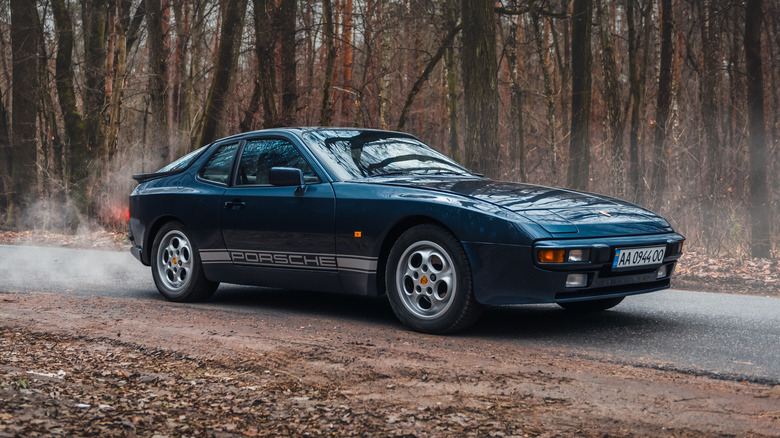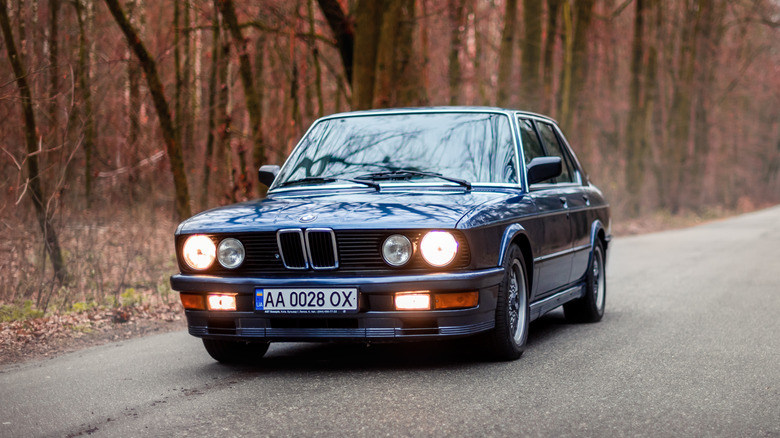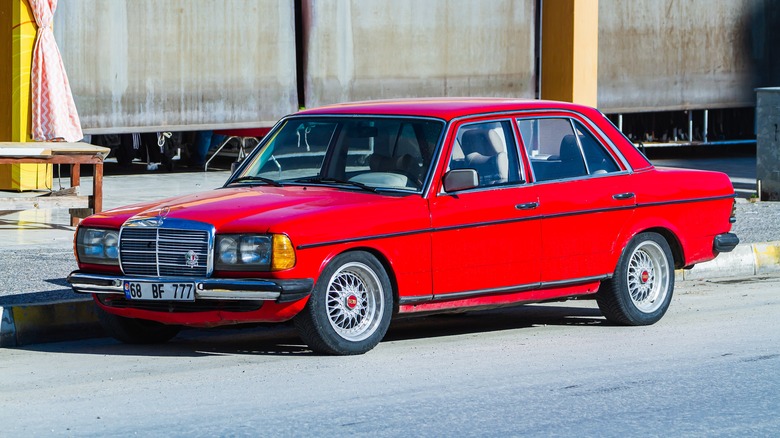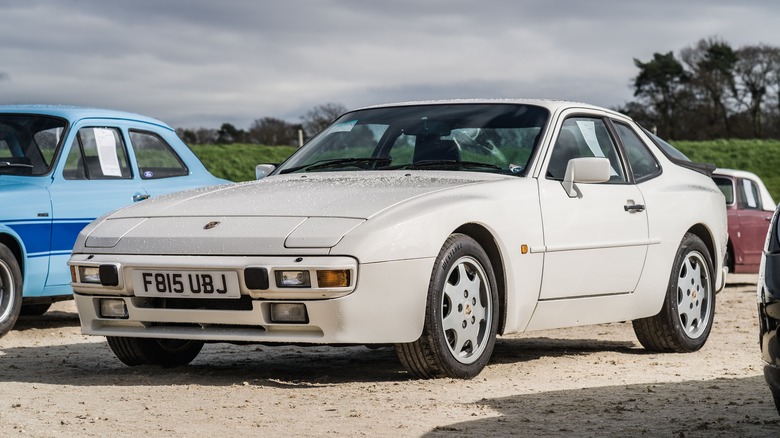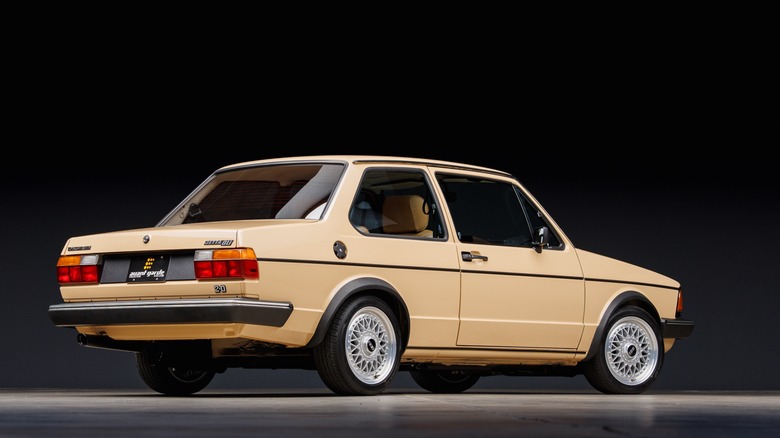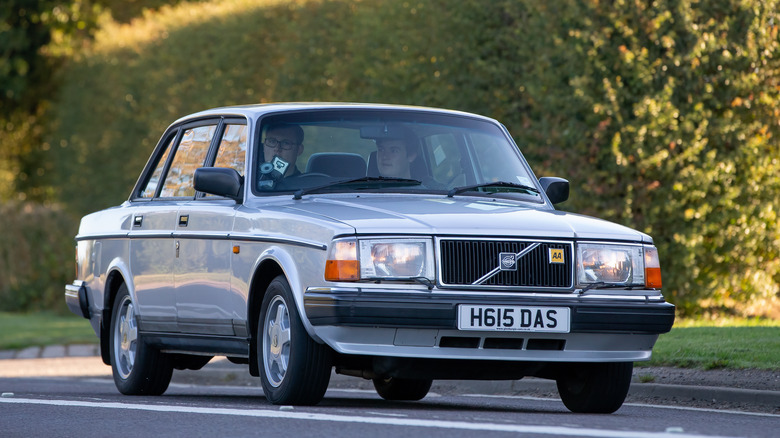5 Classic European Cars You Can Actually Afford
When most people think of European classics, cheap isn't the first word that comes to mind. After all, the top 10 most expensive cars ever sold at auction are all European sports cars. They typically aren't associated with easy maintenance, reliability, or practicality either, but most of the time, those aren't the reasons why most people are interested in classic European cars in the first place.
Most enthusiasts are in the market for European cars for their build quality, timelessness, and, most of all, an unrivaled driving experience. There are so many enthusiasts looking for the classic European experience that models that were considered cheap only a decade ago have skyrocketed in price to the point where they are simply out of reach for most people at this point. While you can't pick up a BMW E30 M3 or a Mercedes 190E for pennies on the dollar anymore, there are still plenty of options out there that don't cost an arm and a leg and still provide the full vintage European experience, good and bad.
BMW E28 5 Series
Classic BMWs are an example of demand being proportional to price, as some of the Bavarian marque's most well-known models, including cars like the E46 M3, E39 M5, and 850CSi, have begun to reach unattainable status for most casual buyers. Even regular classic BMW models — not part of the exclusive M club — are picking up steam in the used car market. While models like the E30 3-Series and E24 6-Series have seen jumps in resale value, one model that hasn't is the E28 5-Series.
The E28 was the second generation of BMW's now-famous 5-Series lineup and was sold around globally from 1981 until 1988. The E28 captures 1980s BMW styling, which is considered by enthusiasts to be one of BMW's best aesthetic eras. In addition to the E28's facade, it also featured some of the most reliable engines that BMW has ever built under its hood, including the M20 and M30 straight-sixes. The reliable and amply-powered engine options paired well with the E28's nimble and responsive driving characteristics thanks to MacPherson strut/semi-trailing arm suspension and a lightweight chassis.
The E28 market in the United States is broken up into three main categories including the 'eta' models, which feature the less powerful fuel-efficient variants of the M20 engine, the 'i' and 'is' models, which feature the more powerful M30 engines, and the M5, which sits atop the pile. The eta models tend to go for the least, averaging $9,195 at auction, and the more highly sought-after i and is models average around $17,000 to $19,000. Unfortunately, collectors have caught on to the E28 M5, with average prices hovering around $42,000.
Mercedes Benz W123 300D Turbodiesel
The essence of the Mercedes Benz E-Class extends back nearly 120 years to the brand's founding and has always represented a well-built, sophisticated, and elegant product. While nearly every single generation of the E-Class has fit those descriptions, the W123 generation went above and beyond in all three. Produced from 1976 to 1985, the W123 is known as a fantastic German car to daily drive even 50 years after it was first released. A major reason for the W123's continual praise has to do with its build quality. It is a famously over-engineered car equipped with a range of truly unkillable engines. The combined value of fantastically executed personal luxury and unrivaled reliability made the W123 one of the most popular Mercedes models in history, selling over 2.7 million units.
The W123 was sold around the world with a dizzying number of variants – 30 to be exact. The U.S. only received a handful of those variants, with the highest trim model being the 300D. Unlike the other variants which were powered by gasoline engines ranging from four to six cylinders, the 300D used a diesel engine. In 1980, the standard 300D had a turbocharger, and a 300D Turbodiesel model was added in 1981. In comparison to some of the lower tier W123 variants like the 72 horsepower 240D, the 300D Turbodiesel was a big step up to 121 hp and 170 lb-ft of torque. Despite the additional power, the 300D Turbodiesel is known for its comfortable interior and ride quality more than outright speed. The 300D Turbodiesel was one of the rarer variants of the W123, with only 75,261 examples built. Despite their relative rarity, they are still inexpensive, with solid examples selling for around $13,000.
Porsche 944
Porsche has had a go-to money-making formula for over 75 years. It consists of pairing a rear-mounted engine with rear-wheel drive — a rare arrangement in modern sports cars. In 1963, Porsche gave a number to that formula which has since become one of the most recognizable model names in all of sports car history — 911. However, in the mid-1970s, a collaboration between Porsche and Volkswagen fell through when VW backed out, leaving the rights to a front-engined, rear-wheel drive, baby sports car in the hands of Porsche. The project would eventually become the 924, 944, and 968.
The Porsche 944 came after the 924, and it introduced the new layout. Over the 924's lifecycle, Porsche worked out most of the platform's issues, making the 944 a better car with a true Porsche-built 2.5L four-cylinder engine and in-house styling. It was also celebrated for being one of the best handling sports coupes of the time, even winning Car and Driver's Best Handling Imported Car award in 1984. The 944 defeated the "not a real Porsche" sentiments that the earlier 924 faced and became the brand's best-selling front-engined coupe.
Despite the 944's widespread acclaim, its alternative layout makes it a much less valuable car than an equivalent 911, because of the latter's history and pedigree. The current average value for a good quality Porsche 944 is around $11,500, with late model and turbo models skewing higher. 944 S2 models — which were released in 1989 with a more powerful 208 horsepower four-cylinder – typically sell for around $25,000, while turbo models average around $27,000.
Mk2 Volkswagen Jetta GLI
The Mk2 Volkswagen Jetta isn't the preferred choice when it comes to sporty 1980s VWs. That honor has to go to the Mk2 Golf GTI, which is widely considered to be one of the best hot hatchbacks ever made. However, over the past 10 years, their popularity amongst enthusiasts and collectors has caused their prices to shoot up to uncomfortable prices for a 40-year-old hatchback. With the Mk2 Jetta GLI, you get the same engine, atmosphere, and attitude for a much more reasonable price.
In the U.S., the Mk2 Jetta was offered from 1985 until 1992, taking the reins from the wildly successful Mk1 Jetta. The Jetta's recipe was relatively straightforward — take the Volkswagen Rabbit/Golf, stretch it a bit, and add a trunk. Volkswagen's goal with the Jetta GLI was to replicate the fun of the Golf GTI with a dash more practicality, and the Mk1 did that pretty well. While the first Jetta was unquestionably a good start, the Mk2 perfected the formula.
The Mk2 GLI was larger, more powerful, and more upscale. Over the course of its production, it was offered with either a 1.8L 16-valve four-cylinder or a larger 2.0L 16-valve four-cylinder, which are famous for their high-strung character and peppiness. Its handling was also a high point, with Car and Driver saying in a 1988 review, "The behavior of the Jetta GLI 16V's various performance components ... convince you that they embarked together on the same mission: providing you with an excellent driving experience."
While Volkswagen Mk2 GLIs might be cheaper than Mk2 GTIs, they average around $12,500, which is still a tad high for an aging compact sedan. Even at that price, Mk2 Jetta GLIs still provide one of the best European driving experiences for the price.
Volvo 240
The Volvo 240 is one of the most immediately recognizable silhouettes of any car to come out of Sweden. Part of the reason why it is so iconic is because the 240 was in production for nearly 20 years, sold nearly 2.9 million units, and barely changed. In many ways, it is fair to say that Volvo got it so right when it was released in 1973 that it remains timeless to this day.
The car was initially released as a replacement for Volvo's popular 140, borrowing heavily from the earlier model's styling. The 240 was available in three different body styles including a coupe (242), sedan (244), or wagon (245). While the 240 received refreshed components under its restyled body, including a longer wheelbase, front MacPherson struts, rack and pinion steering, and Bosch K-Jetronic fuel injection to name a few, the most significant difference was the 240's uncompromising dedication to safety. In 1976, it was deemed the benchmark for vehicle safety in the United States by the National Highway Traffic Safety Administration and remained the safest vehicle in its class for over 10 years after its release.
It's important to get one thing straight, the Volvo 240 isn't a fast or sporty car, but that isn't the point of it.The 240's numerous four-cylinder and V6 powertrain choices were barely enough to get the cars going under their own weight and its suspension was soft and floaty. The fun of the 240 boils down to its character and charm more than anything else. Since 240 prices aren't inflated by motorsport heritage or limited production numbers, they are still extremely affordable today, with low mileage, and well-maintained examples hovering around $10,000.
